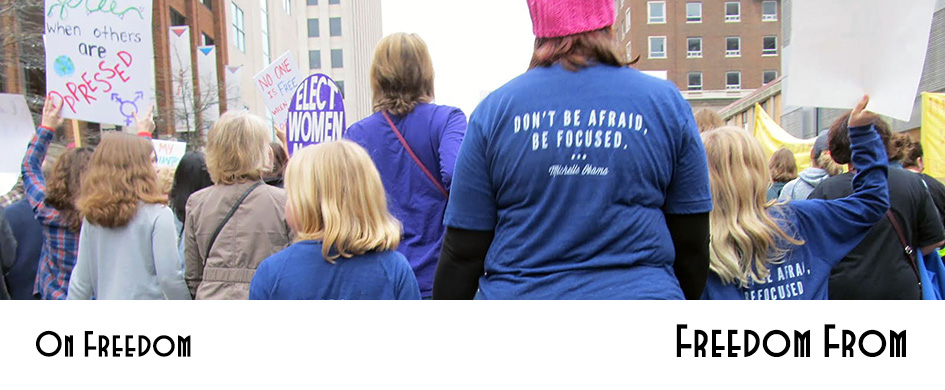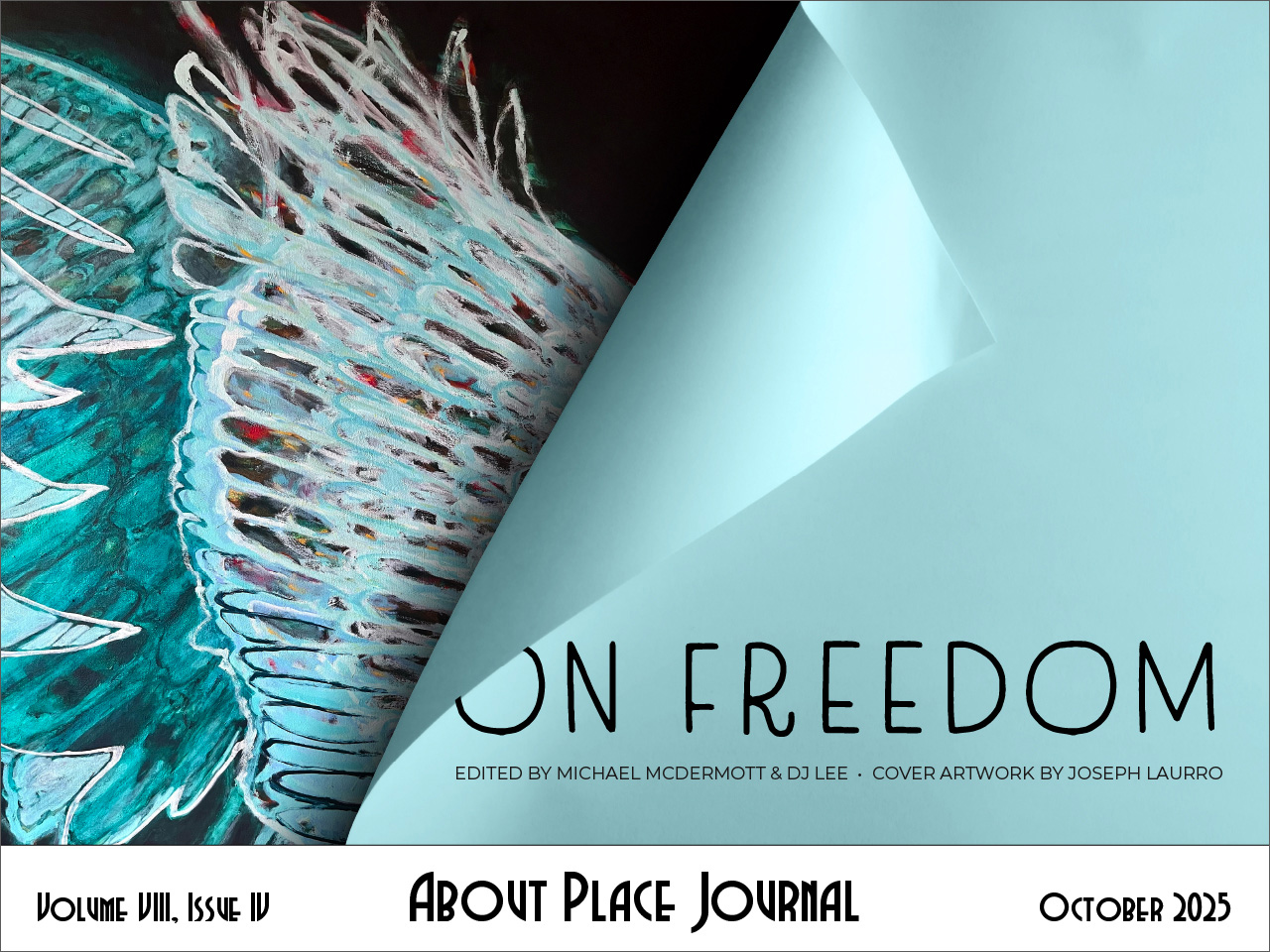I grew up in northeast Ohio, where blistering humidity and family history took us north most summers to the shores of Lake Huron, near the small town of Tobermory at the tip of the Bruce Peninsula in Ontario. We stayed there in a small cabin with limited running water, a rustic water closet, and acres of woods to explore.
The six of us kids were crowded in the cabin, but it didn’t matter, since we spent most of the time outdoors. My happiest childhood memories are there, at this place called Cairnwood where I felt a wonderful sense of contentment, excitement, possibility, and peace.
I felt freedom.
Today when I think of freedom, I think of the rugged Tobermory roads of my childhood, graveled paths with puffs of dust that hovered over our steps as we walked. I think of the reticent summer sun that dared to tap us with a gentle burn. I think of days when I could explore alone for hours, watching the butterflies pump their wings and glide above the wildflowers. I could walk alone without a single fear. Me, a curious and scrawny eight-year-old girl.
In my adventures I discovered a clearing in a patch of woods, carpeted in gray rock trimmed with moss and a scattering of tiny flowers that burst through the rocks determined to survive. A splash of tall tiger lilies added the sun’s color. Large rocks to one side served as resting places. It was my clearing, where I could talk to the sky and make up songs to sing to the trees. Where I could go not only to be alone, away from the raucousness of my family, but simply to be, in solitude and joy.
My experience in the woods was both a freedom to and a freedom from. Freedom to move and walk and explore on my own without fear, to become friends with nature on my own, uninterrupted and untroubled. Startled only by the occasional fox, I felt completely safe. I experienced a great freedom that created in me a sense of strength and potential I have carried with me my whole life.
The clearing was a place I felt creative, another freedom nurtured there. The freedom to create, to explore one’s creativity, is a basic human need, for creativity is an essential human process. Creativity is the unleashing of vital energy in activities that help our species grapple with and celebrate being human and is, not surprisingly, closely related to freedom. When the freedom to create is squashed by a system that discourages people from reading and thinking critically, book bans become standard. When the freedom to create gives birth to voices of protest that are then criminalized, the voices persist, in the lives of people like Paul Robeson and Billie Holiday and Victor Jara, among many. Creativity is anathema for systems that rely on compliance, fear, and silence, making the freedom to create one that is regularly belittled, restricted, defunded, and commercialized into pablum.
The freedom to create is closely connected to the freedom to experience nature. Nature provides both a literal and a mental openness that allows creativity to emerge and flourish. Getting “in the zone” can certainly be achieved by a creative person in many ways; being in nature is a shortcut to that space where the mind can wander freely.
For me, the clearing was my workshop, my teacher, my opening night.
The dense woods surrounding the cabin opened onto a narrow path to the lake—the beautiful, majestic, vast Lake Huron, its shores capped with thick white rocks dotted with blue gentians and the wear of millennia. I learned to skip stones on that shore, searching for the thinnest, lightest stones, shapes that fit in the palm of my hand, placed in a stack at my feet. To skip a stone, you swing your arm with force, flick your wrist, and release the stone out onto the water, flat, free to skip over the water’s surface two, three, four, many times. Skipping stones was a joyous pastime, a perfect combination of meditation and sport.
The serenity of this freedom was in sharp contrast to the freedom from a host of childhood dangers and traumas that have also stayed with me. Freedom from the leather belt used to discipline us when we acted like children. Freedom from the confines of a chaotic cramped house where eight people lived without privacy. Freedom from the angry neighbor who grabbed me and threw me in his car, abducting me for playing in his yard. Freedom from the young man who molested me at a public beach. Too many freedoms from for such a young girl, more than any child should have to face.
In my adulthood, I have come to understand that many children live and daily face much greater threats, like the children of Palestine, whose very lives are constantly threatened, destroyed, and taken. I’ve also learned the lands I enjoyed as a child were unjustly and violently stolen from their longtime inhabitants and caretakers, the indigenous peoples of what became known as Canada. I know their children suffered at the hands of culture-killing residential “schools” whose violent practices were revealed with the discovery of hundreds of indigenous children’s graves.
I know I was fortunate to spend time on the Bruce Peninsula, where flora and fauna were a constant source of awe and delight. For that I am profoundly grateful. When I think of Cairnwood, I marvel at the wide paths it presented to me, and the dark alleys it protected me from.
The greatest freedom I experienced those summers was the freedom to build a robust and lasting relationship with nature, to feel myself a part of it, to be ever in awe of it, and to be determined to have nature always in my life.
As an adult, especially in these times of climate crisis, I have felt ever more pressed to fight to protect nature, to protect Earth, as it has protected me. I know the freedom to experience nature in peace is not enjoyed by all people, and not by all species. Orangutans in Southeast Asia are terrorized as their homes disappear to make way for palm oil plantations, and disoriented fruit bats in West Africa abandon dwindling forests to look for food in human society, where their native microbes wreak havoc and lead to their persecution.
For many humans, war and conflict and climate change mean living in nature is a distant memory, as land seizures, degradation, and bombs turn landscapes into heart-rending scenes of destruction. The children of Palestine again come to mind, children who have been stripped of their lands, their orchards, their olive trees, their azure shores.
Loving nature is loving and defending Earth. It is intuitive, immediate, and irrepressible. It is a basic freedom we must fight for. This tender, unconditional love should be encouraged, promoted, and taught, learning from the millennia-long legacy of indigenous peoples’ wisdom. We need to promote a culture of love and respect for nature as a conscious and intentional process. This is especially important as future generations prepare to successfully confront and resolve the climate crisis. Love and respect for nature should comprise a pledge all children learn, giving children every opportunity to develop allegiance to Earth and to become responsible stewards of the planet and all her creatures.
The freedom to walk in nature in peace is a freedom we all must have.


